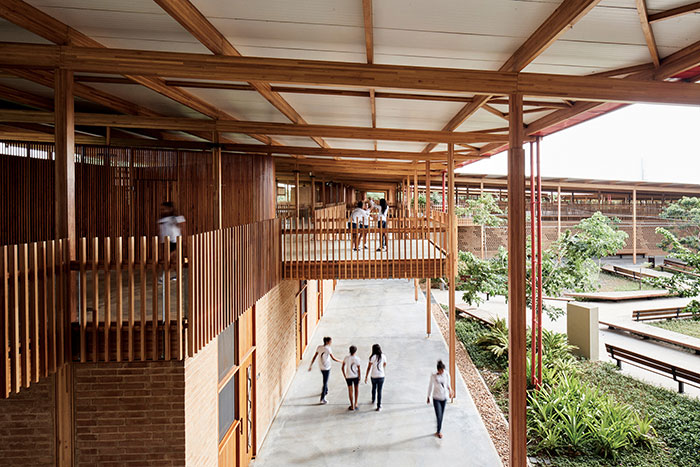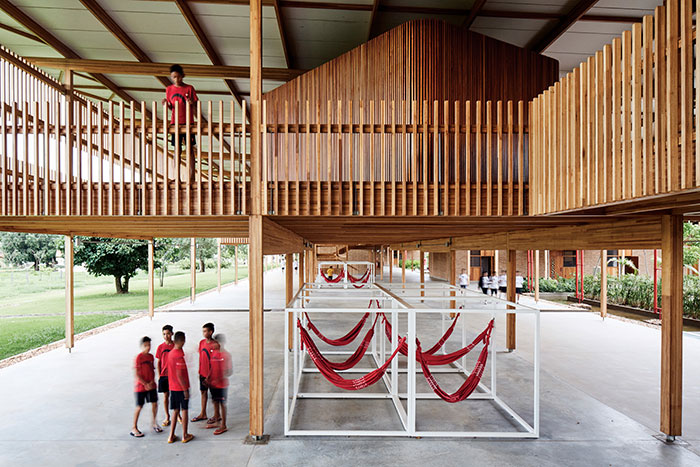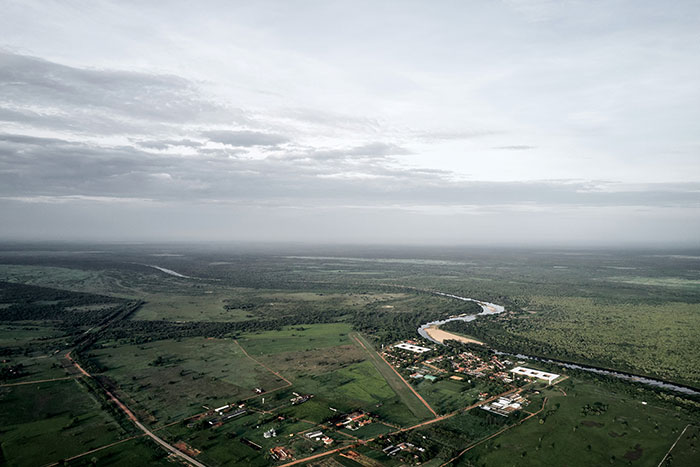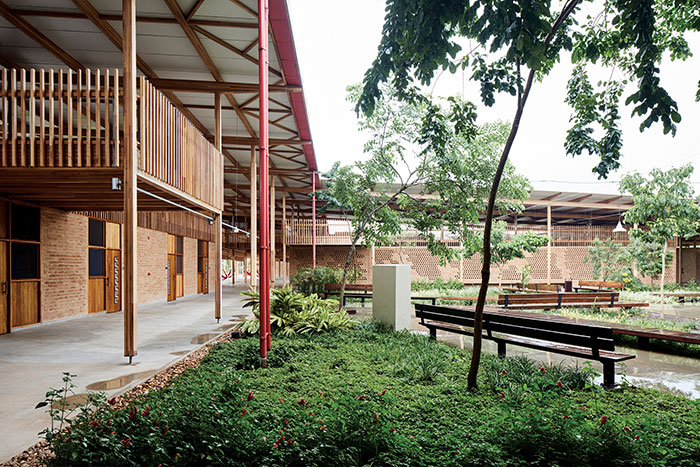Children Village, a new school complex on the edge of the rainforest in northern Brazil, has won the RIBA International Prize 2018.

The complex, designed by Brazilian architects Aleph Zero and Rosenbaum, was chosen from a shortlist of four exceptional new buildings by a grand jury chaired by renowned architect Elizabeth Diller (DS+R). The RIBA International Prize is awarded every two years to a building that exemplifies design excellence and architectural ambition, while also delivering meaningful social impact. It is one of the world’s most rigorously judged architecture awards, with every longlisted building visited by a group of international experts.
“Children Village provides an exceptional environment designed to improve the lives and wellbeing of the school’s children,” said RIBA President Ben Derbyshire. “It illustrates the immeasurable value of good educational design.”

Children Village provides boarding accommodation for 540 children aged 13 to 18 attending the Canuanã School. Pupils come from remote areas of the country, some travelling many hours by boat. Funded by the Bradesco Foundation, Children Village is one of forty schools run by the foundation providing education for children in rural communities across Brazil.
For the architects, Gustavo Utrabo and Petro Duschenes from Aleph Zero and Marcelo Rosenbaum and Adriana Benguela from Rosenbaum, the project shows how architecture can be a tool for social transformation. They worked closely with the children to identity their needs and desires for their school. They wanted to create an environment that could be a home away from home, where children could develop a strong sense of both individuality and belonging.
“It has been a joy to see the children making the building their own and adapting the space to fit their needs,” said Utrabo and Duschenes. “We wanted to be prescriptive without being overbearing, to be supportive without being patronising, and to encourage growth and development without cosseting it.”

Covering an area of almost 25,000 m2, Children Village is organised into two identical complexes: one for girls and one for boys. Residences are centered around three large, open and well-shaded courtyards at ground level, where dormitory accommodation is located. On the first floor, there are flexible communal spaces ranging from reading spaces and television rooms, to balconies and hammocks, where the children can relax and play.
For Rosenbaum and Benguela, “The space facilitates the interaction between public and private, and socialising between the collective, nature and the individual, reconnecting children and young people to their origins and with their surrounding ecosystem.”
The ecosystem around the complex – particularly the tropical climate, where temperatures reach the mid-40s in summertime – was one of the major challenges cleverly addressed by the architects. The large canopy roof, the structure of which is made up of cross-laminated timber beams and columns, provides shading. The overhanging canopy design has created an intermediary space, between inside and out, giving the effect of a large veranda overlooking the surrounding landscape and creating a comfortable environment with no need for air conditioning.

Combining a contemporary aesthetic with traditional techniques, Children Village has been described by the judges as “reinventing Brazilian vernacular”. The building is constructed with local resources and based on local techniques. Earth blocks handmade on site were used to construct the walls and latticework, chosen for their thermal, technical and aesthetic properties. As well as being cost effective and environmentally sustainable, this approach creates a building with strong connections to its surroundings and with the community that it serves.
Find out more about the RIBA International Prize 2018 and the other shortlisted projects.
Photographs courtesy of Cristobal Palma / Estudio Palma | www.estudiopalma.cl










